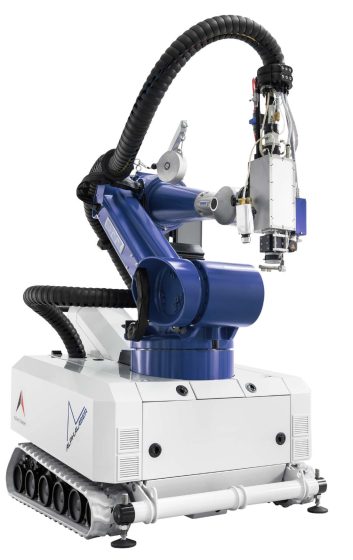In many cases, the wear and tear of a product or component is caused by surface damage resulting from abrasion, friction or fatigue. Laser hardening is a pre- or post-curing process. It is aimed at the targeted hardening of the surface of these products, parts and tools, thus significantly increasing, even multiplying, the service life of the workpiece. Almost all methods for the surface heat treatment of hardenable materials can be replaced by laser hardening. During the processes, the laser heats the target surface to the right temperature (below the melting point) by applying very high intensity and precisely controlled energy. Rapid cooling takes place without coolant by heat conduction within the material (for workpieces with a larger size/mass) or, in special cases, through the use of an external coolant (gas or liquid). The heating-recooling (austenitic-martensitic transition) changes the structural state and properties of the metal, increasing its surface hardness and wear resistance while minimising the risk of warpage of the finished workpiece.
In laser hardening, the surface hardness of the workpiece is increase without any additives. The computer-controlled, robotic treatment process can be regulated with extreme precision, taking into account the alloy and shape/form characteristics of the workpiece.
The process is controlled by a flexibly adjustable computer program, regulated by high-speed and high-resolution thermal camera feedback, and executed by an industrial robot. The process is to a large extent self-regulating (with millisecond time scale, 1 Watt power and temperature control with a accuracy of 1-5 degrees Celsius), significantly eliminating any human errors and ensuring consistent quality. All data is recorded during the digital workflow, allowing for subsequent control and process reproduction according to the customer’s requirements.
The flexibly adjustable computer program also allows the hardening of workpieces where only a specific part of the surface needs to be hardened, possibly to different degrees. This kind of selectivity cannot be realized by other types of hardening (induction, diffusion, or, as far as execution is concerned, furnace, induction).
Laser hardening is also by far the least restricted in terms of size limits. While the induction process requires a dimensionally accurate custom design for hardening (so a custom hardening tool has to be prepared for each different size of product), in the case of furnace hardening, the main bottlenecks are the physical size of the furnace and the placement of the product within the furnace. In laser hardening, the robot’s ability to handle the workpiece, using multiple gripping positions if necessary, significantly increases the surface area that can be hardened, the selectivity thereof, and thus the applicability of laser hardening.
A special service of our company, unique in Hungary and the surrounding countries, is that we can perform laser hardening (and cladding) at the customer’s site. This has considerable benefits for the customer because it is not necessary (often almost impossible) to transport the workpiece. This significantly reduces downtime, makes maintenance more flexible (coordination with other suppliers and experts), reduces the risk of accidents, and ultimately results in significant savings.
Laser hardening typically has a surface depth of 0.1 – 1.5 mm. This is nearly fifteen times the maximum depth of furnace hardening with a nitriding procedure, for example, but distortion and the resulting need for rework are significantly less, in many cases negligible.
Laser hardening is surface hardening, i.e. hardening is only performed on the designated surface of the workpiece, the workpiece core retains the physical properties of its material. This significantly increases the hardness of surfaces subjected to high stresses, but, at the same time, the workpiece (e.g. a tool) remains flexible enough not to become rigid and break as if the whole workpiece had been made from a significantly harder material. Similarly, it is significantly easier to shape/machine the workpiece, and there is less tool wear.
Alpha Laser is a German company specialising in the manufacture and development of laser technology systems and machines, and is today the only European market player in the delivery of complete laser hardening systems. Our company uses ALPHA Laser’s high-tech mobile laser hardening and cladding solutions, with comprehensive professional and technical support from the manufacturer.

Ask for an individual offer!

A special service of our company, unique in Hungary and the surrounding countries, is that we can perform laser hardening and cladding at the customer's site.
2024 © APZ Laser Kft.
Dear Visitors!
Our company will be closed between 21 December 2024 and 6 January 2025.
Thank you for your understanding, we wish you happy holidays and a happy new year!